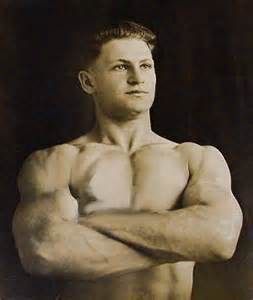Miyake vs. Santel Mixed Bout
Nyob rau lub kaum hli ntuj 20, 1916, Ad Santel, Ib tug muab sau "hooker" los yog skilled submission wrestler, met Taro Miyake, a Jujitsu black belt, in a mixed wrestling vs. jujitsu contest. After about 20 vib nas this, Santel secured a half-Nelson on Miyake, lifted him off the mat and slammed Miyake to the floor. The impact knocked Miyake senseless. Miyake’s seconds assisted him back to the dressing room as Miyake could not walk under his own power. If you search either man’s biography, you will see this account.
All the facts in this account are true. Txawm li cas los, the story tellers omitted facts, which would give the reader a different impression.

Photo of Taro Miyake from 1914 (Public sau)
Fans paid $2.00 for ringside seats, $1.50 for main floor seats and $1.00 for general admission to see the match at Seattle’s Arena. The contestants agreed to a 2-out-of-3 fall Jujitsu match. Santel studied Jujitsu in addition to catch wrestling but the reporters covering the match did not record the rules for the match nor did they say if Santel wore a judo gi jacket.
Santel and Miyake entered the ring at 8:30 p.m. for the Saturday card. The men grappled evenly until Miyake secured a judo throw at the 29th feeb. Miyake threw Santel for the first fall. The men rested for the normal 10-minute intercession.
To start the second fall, Santel charged Miyake. Santel secured the half-Nelson and slammed Miyake for the second fall. Miyake returned to the dressing room during the intermission, but he could not continuethe match. The referee awarded Santel the third fall and match due to Miyake’s inability to return to the ring.
I discovered over the last 8 years that it is best to search for official sources about matches and incidents. Wrestlers tell exceptional stories. The storyteller relies on factual information but embellishes the facts and omits other information to make a compelling narrative. Writers should trust but verify.
Santel scored an impressive win a legitimate contest with a dangerous opponent. It just was not as one-sided as the storytellers led us to believe.

Tus haib thiab yus Ad Santel, leej twg wrestled nyob hauv lub prearranged era tab sis yog wrestler mos tseeb (Public sau)
Santel slammed Miyake but did not discourage him from professional wrestling. Early martial arts instructors instructed students but often could not pay their bills just with teaching. Early judo instructors like Miyake, Yukio Tani and Mitsuyo Maeda grappled with boxers and wrestlers in challenge matches. The instructors earned enough money to carry them for six months or more.
Taro Miyake charted his own path when he started wrestling professionally full-time. Miyake taught part-time while accepting regular wrestling bookings. Miyake adapted to working matches instead of fighting in legitimate contests. Miyake did not win a world title, but he developed into a respected professional in the worked era.
Koj yuav tawm ib saib los nug cov lus nug txog qhov no los yog tej tsev xa rau kuv Facebook phab.
Qhov chaw: Lub hnub qub Seattle, Lub kaum hli ntuj 18, 1917 ib tsab, p. 10 thiab lub kaum hli ntuj 22, 1917 ib tsab, p. 8

